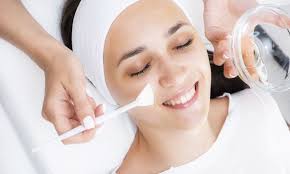
Resorcinol in Skin Care: A Comprehensive Guide
Resorcinol is a potent ingredient widely used in skincare for its skin-lightening properties and ability to treat various skin conditions such as acne, sun spots, melasma, and other types of hyperpigmentation. This versatile compound can be found in many skin care products, especially in chemical peels offered by dermatologists. However, its usage does come with important safety considerations, potential side effects, and recommendations for its correct application.
What Is Resorcinol?
Resorcinol is a type of hydroquinone, classified as a phenolic compound, and is primarily known for its skin lightening properties. As a tyrosinase inhibitor, resorcinol works by blocking the enzyme tyrosinase, which is essential for the production of melanin. Melanin is the pigment responsible for giving skin its color, and by inhibiting its production, resorcinol can effectively lighten dark spots and pigmentation disorders.
Resorcinol is commonly used in the treatment of:
Acne: It helps combat acne-causing bacteria and reduces inflammation in the skin.
Melasma: This is a condition characterized by dark, often patchy, skin spots, typically due to hormonal changes, such as during pregnancy.
Post-inflammatory Pigmentary Alteration (PIPA): This refers to the darkening of the skin that occurs after inflammation or injury.
Although resorcinol is found in some over-the-counter products, it is more commonly used in professional treatments such as chemical peels administered by dermatologists due to its potent effects.
Is Resorcinol Safe for Skin Care?
Resorcinol has been safely utilized in dermatological treatments for many years, particularly in controlled environments like medical-grade chemical peels. However, while it is generally safe, there are a few important precautions to keep in mind:
1. Not Safe During Pregnancy
It is highly recommended to avoid using resorcinol during pregnancy. Studies have shown that resorcinol can be absorbed into the body and is detected in urine after topical use. As the effects of resorcinol on a developing fetus are not well understood, it is safer to avoid this ingredient during pregnancy. There are safer alternatives for treating skin conditions like melasma while pregnant.
2. Potential for Allergic Reactions
As with any skincare ingredient, some individuals may experience an allergic reaction to resorcinol. Symptoms may include redness, irritation, or a rash in the treated area. If you have sensitive skin or are prone to allergies, it is essential to perform a patch test before applying any new product containing resorcinol to your face or body.
3. Risk of Irritation
Resorcinol, especially in higher concentrations, can cause irritation to the skin. This is why it is more commonly used in professional treatments like chemical peels, where dermatologists can control the concentration and application. If you use resorcinol at home, it’s important to follow the product instructions carefully and avoid using products that contain high concentrations of this ingredient.
4. Potential to Worsen Pigmentation
If used incorrectly or in excess, resorcinol can lead to skin inflammation, which may ultimately worsen pigmentation issues like melasma or cause post-inflammatory hyperpigmentation (PIPA). This occurs when the skin becomes irritated, and dark spots develop as a result of prolonged inflammation. This is particularly concerning for individuals using resorcinol to treat pigmentation issues, as overuse may exacerbate the very condition they aim to treat.
5. EWG Rating and Safety Concerns
The Environmental Working Group (EWG) rates resorcinol as a 7 on its scale of 1 to 10, with 10 being the highest risk. This rating indicates that resorcinol has a moderate level of concern regarding its safety in cosmetics. In some countries like Japan and Canada, the use of resorcinol in cosmetics is restricted due to potential health concerns. It’s always important to check product labels and research any ingredients thoroughly before use.
Key Benefits of Resorcinol in Skin Care
Despite the potential risks, resorcinol offers a wide range of benefits, particularly for those struggling with pigmentation issues or acne. Here are some of the key advantages of resorcinol:
1. Effective Treatment for Hyperpigmentation
One of the primary uses of resorcinol is in the treatment of hyperpigmentation. This includes dark spots, sunspots, and melasma, which can be caused by a variety of factors such as sun exposure, hormonal changes, or inflammation. Resorcinol helps lighten these spots and promote a more even skin tone over time.
2. Acne Treatment
Resorcinol has antibacterial and anti-inflammatory properties that make it effective in treating acne. It works by eliminating acne-causing bacteria from the skin and reducing inflammation, which is a major contributor to acne breakouts. By incorporating resorcinol into an acne treatment regimen, individuals may experience clearer skin with fewer breakouts.
3. Anti-Aging Benefits
In addition to its skin-lightening properties, resorcinol has notable anti-aging benefits. Due to its antioxidant, anti-inflammatory, and anti-glycation properties, it helps protect the skin from oxidative stress, which is caused by exposure to pollutants, UV radiation, and environmental factors. By neutralizing free radicals and reducing inflammation, resorcinol helps minimize the visible signs of aging, such as fine lines and wrinkles.
4. Sun Damage Repair
Resorcinol can also help treat sun damage by lightening sunspots and promoting an even skin tone. Many individuals use resorcinol to fade discoloration caused by prolonged exposure to the sun, helping to restore the skin’s natural complexion.
Potential Side Effects of Resorcinol
While resorcinol offers numerous benefits, it is not without its side effects. Here are some common side effects associated with resorcinol use:
1. Skin Irritation
One of the most common side effects of resorcinol is skin irritation. This is particularly true when used in high concentrations or too frequently. Irritation can lead to redness, dryness, and peeling of the skin. If you experience significant irritation, it is important to discontinue use and consult a dermatologist.
2. Allergic Reactions
Some individuals may experience mild allergic reactions, such as rashes or swelling, when using products that contain resorcinol. If you have sensitive skin or a history of allergies, it is crucial to perform a patch test before incorporating resorcinol into your skincare routine.
3. Hyperpigmentation or PIPA
In rare cases, overuse or improper application of resorcinol can result in hyperpigmentation or worsen existing pigmentation problems. This is particularly problematic for individuals using resorcinol to treat melasma, as excessive use can lead to the development of PIPA, a condition where the skin becomes darker due to prolonged inflammation.
4. “Halo” Effect
When applied outside the target areas, resorcinol can create a “halo” effect. This occurs when the skin surrounding the dark spots becomes lighter than the rest of the skin, leading to an uneven appearance. To avoid this, it’s essential to apply resorcinol only to the areas of hyperpigmentation and avoid spreading it onto healthy skin.
Resorcinol vs. Retinol: A Comparison
Although resorcinol and retinol are distinct compounds, they share several similarities:
1. Tyrosinase Inhibition
Both resorcinol and retinol inhibit the enzyme tyrosinase, which plays a key role in melanin production. As a result, both ingredients can help lighten the skin by reducing the production of melanin.
2. Exfoliation
Both ingredients promote skin exfoliation, which helps to remove dead skin cells and promote smoother, more youthful-looking skin.
3. Combination in Skin Care Regimens
Resorcinol and retinol can be used together in a skincare regimen, especially in the context of chemical peels. When used in combination, these ingredients can enhance each other’s effectiveness in treating pigmentation issues and promoting skin renewal. However, it’s important to use them in moderation, as both can be potent and may cause irritation when overused.
Resorcinol vs. Hexylresorcinol
Hexylresorcinol is a derivative of resorcinol and is considered a milder alternative. While both ingredients have similar skin-lightening benefits, hexylresorcinol is less likely to cause irritation. This makes it a better option for individuals with sensitive skin or those seeking a gentler treatment.
1. Stronger Effects of Resorcinol
Resorcinol is generally more potent than hexylresorcinol, making it effective for more stubborn pigmentation issues. However, this increased potency also means that resorcinol is more likely to cause skin irritation.
2. Milder Option: Hexylresorcinol
Hexylresorcinol, while less potent, is a good choice for individuals with sensitive skin or those who prefer a gentler treatment. It provides similar skin lightening effects but with a lower risk of irritation.
Resorcinol Products on the Market
Although resorcinol is primarily used in medical-grade chemical peels, there are several commercial products available that incorporate resorcinol or its derivatives. However, it’s important to note that high concentrations of resorcinol are generally reserved for professional treatments. If you’re considering using resorcinol at home, it’s crucial to choose products with lower concentrations to minimize the risk of irritation. Always perform a patch test before using any product containing resorcinol.
Important Precautions When Using Resorcinol
Avoid Overuse: Overuse of resorcinol can lead to skin irritation or worsen pigmentation issues. Always follow the instructions on the product label and consult a dermatologist if you’re unsure about how to use resorcinol effectively.
Consult a Dermatologist: Before incorporating resorcinol into your skincare routine, especially if you have a skin condition like melasma or acne, it’s highly recommended to consult with a dermatologist. They can guide you in choosing the right concentration and product for your skin type.
Conclusion
Resorcinol is a powerful and effective ingredient in skin care, particularly for treating hyperpigmentation, acne, and sun damage. It offers significant benefits, such as skin lightening, anti-aging, and anti-inflammatory properties. However, it’s important to use it correctly to avoid irritation, allergic reactions, and other potential side effects like PIPA. Resorcinol is best used in professional settings, but if you choose to incorporate it into your at-home regimen, be sure to follow the product instructions and consult a dermatologist to ensure proper usage.
If you’re considering resorcinol as part of your skincare routine, especially if you have sensitive skin or pigmentation concerns, it’s essential to proceed with caution and get personalized advice from a skincare professional.


